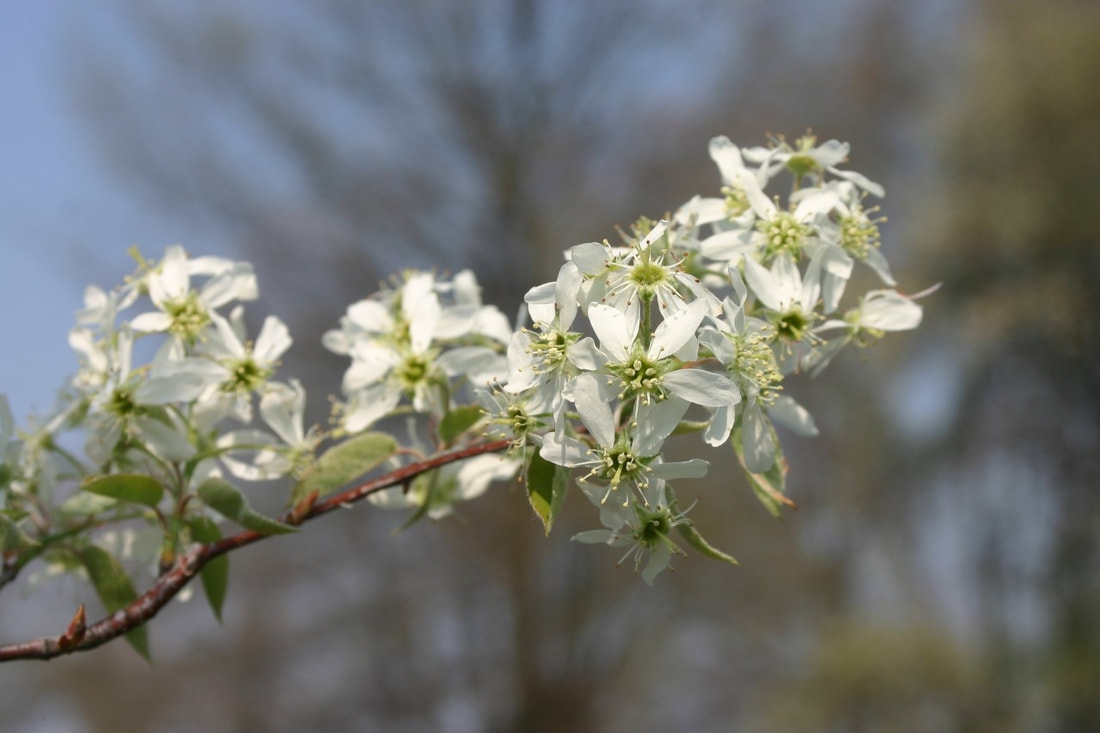The common name serviceberry reflects the timing of its bloom: Historically, the flowers appeared at about the same time that traveling preachers could begin to get around the countryside again, to hold burial services for those who had passed away during the long winter months.
Serviceberry plays host to over 124 caterpillars, including the red-spotted purple, several sphinx moths, and the trickster viceroy butterfly (Limenitis Archippus).
The viceroy is perhaps the best-known example of ‘mimicry’ in the butterfly world. Adult viceroys look very similar to monarchs, with their striking orange and black wings. This strategy serves the viceroy well, as predators such as birds assume that this color pattern means a bitter mouthful laced with the toxic glycosides of milkweed! However, if you look closely, you can easily tell them apart: the viceroy has an additional thick black band intersecting the veins of the hindwings.
Viceroy caterpillars, which don't actually eat milkweed, but feed on the leaves of trees such as serviceberry, can’t rely on the same defense mechanism. These lumpy, bumpy larvae resemble bird droppings—nothing like the classic striped monarch caterpillar—and rely instead on camouflage for protection as they enjoy their ‘host with the most’.
Author: Lisa Schneider
Photo: Pixabay


 RSS Feed
RSS Feed